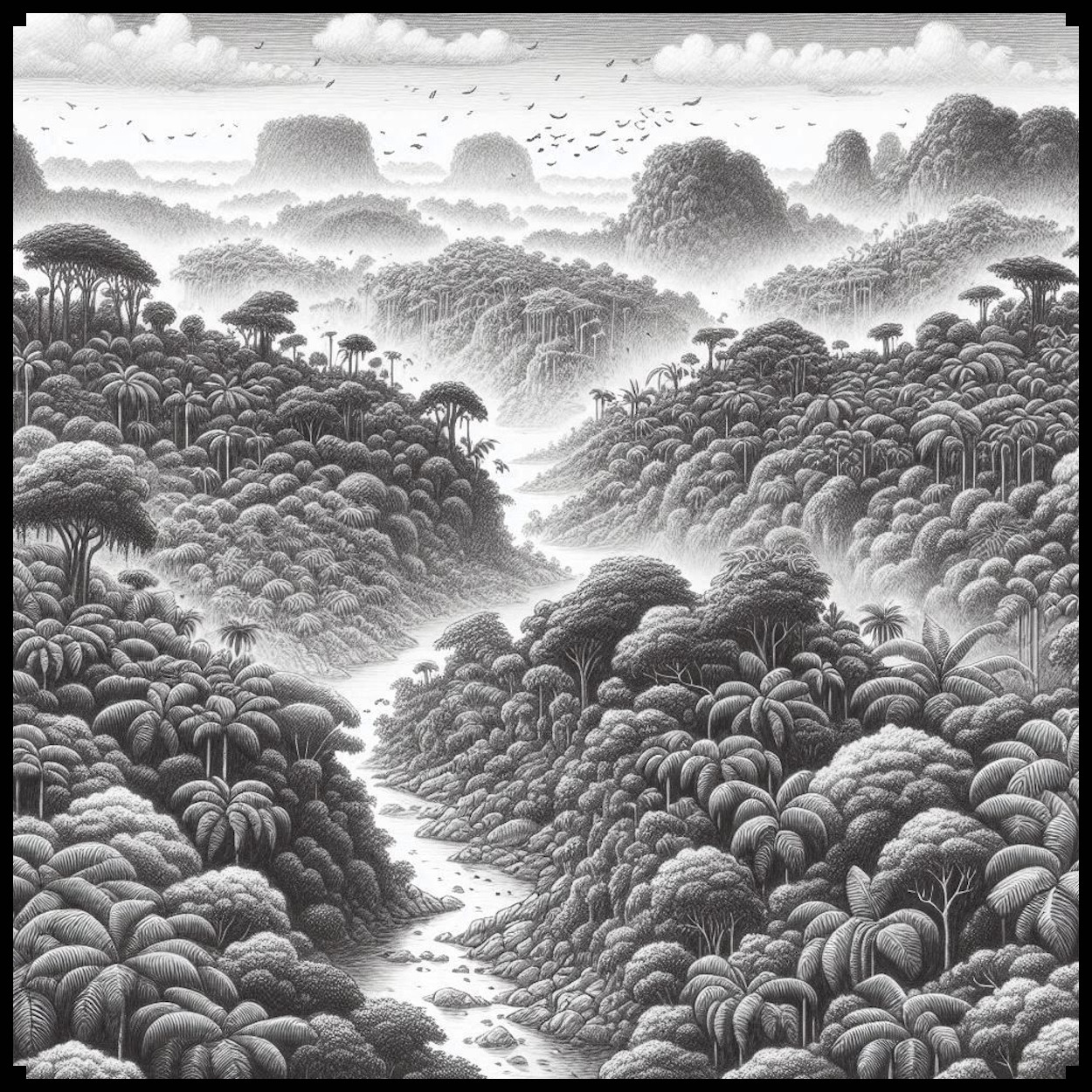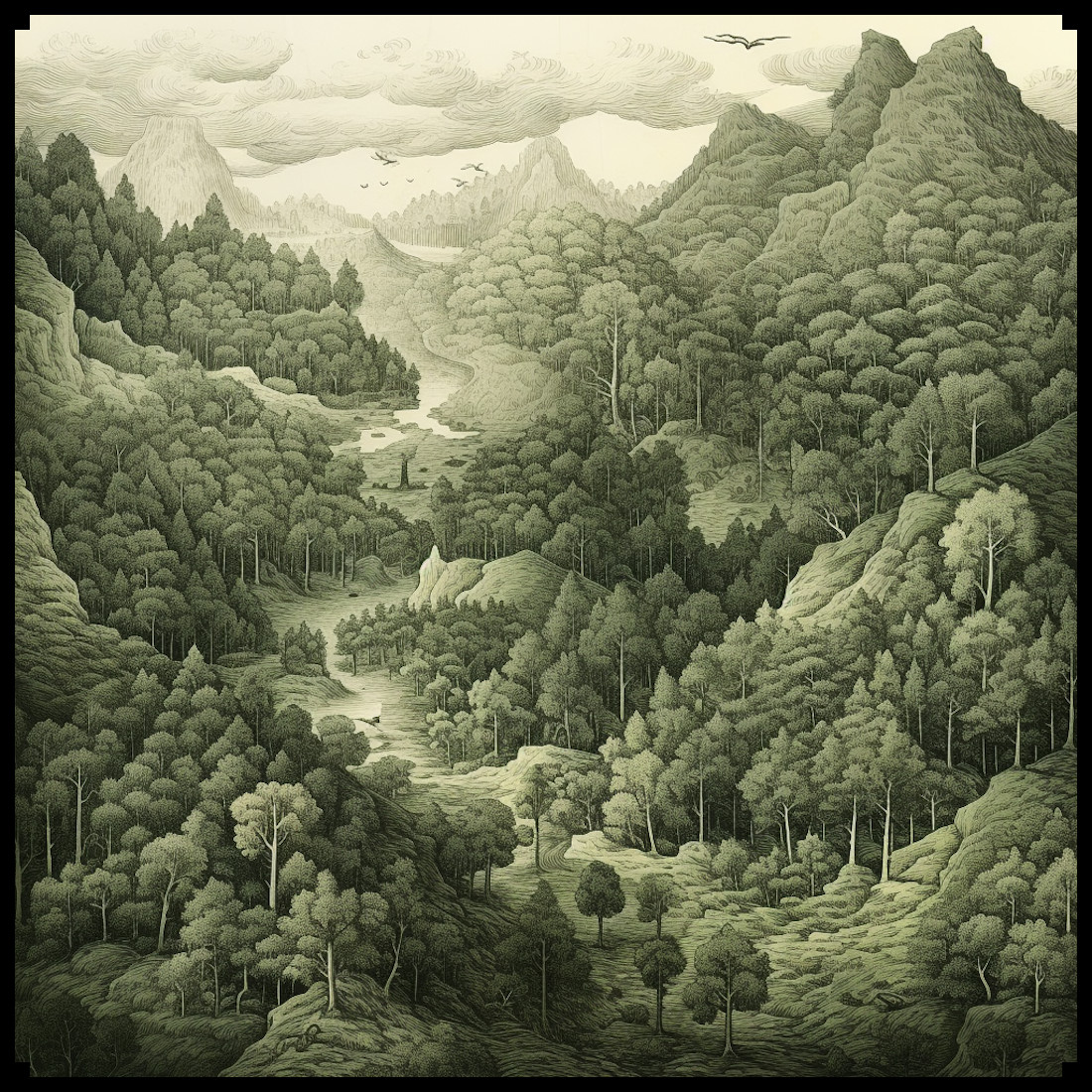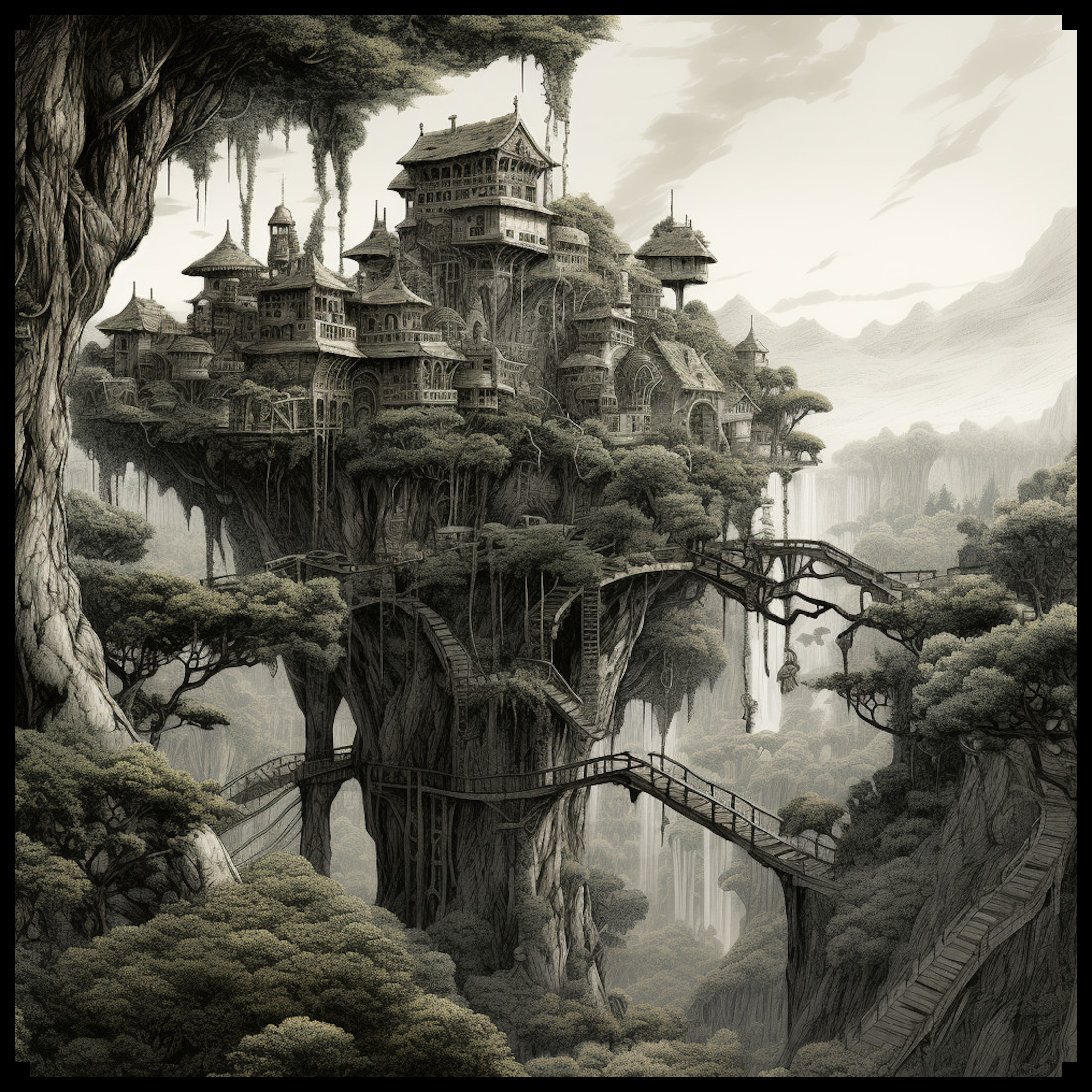
Maps have long been essential tools for navigation, exploration, and storytelling. Over centuries, cartography has evolved from simple diagrams of local areas to elaborate artistic representations of distant lands, infused with myth, legend, and cultural significance. Among the fascinating elements of both antique and fantasy maps are the depictions of landscapes, particularly jungles and forests, with the use of jungle tree clumps, palm trees, and individual jungle trees—a feature well-represented in the Old Cartography Jungle Tree Clumps – Assets Megapack.
BUY AND DOWNLOAD The Old Cartography Jungle Tree Clumps – Assets Megapack here :
Historical Significance of Vegetation in Antique Maps
The depiction of forests and jungles in antique maps was not just a reflection of geographic knowledge, but also an artistic choice steeped in symbolism and utility. Ancient and medieval cartographers often used tree clumps to represent large, forested areas. Unlike modern maps that rely on precise scale and detailed land surveys, early maps employed symbols that conveyed the nature of the terrain more generally. These clusters of trees were crucial in indicating regions of dense vegetation—places that could signify both riches and danger.
Take, for example, Fra Mauro’s Map (1459), one of the most renowned medieval maps. It showcased Africa’s vast forests through clusters of trees, suggesting lush, untamed regions teeming with exotic flora and fauna. Palm trees frequently represented tropical or arid zones, marking areas rich in resources such as dates, coconuts, and medicinal plants. Similarly, in the Tabula Rogeriana by al-Idrisi (1154), palm trees were used to depict specific trade routes and oases across the Middle East and North Africa. These representations were not meant to be literal; instead, they conveyed both geographic and economic information—palm trees indicated fertile and valuable regions along the desert.
In the Renaissance era, maps like Abraham Ortelius’s “Theatrum Orbis Terrarum” (1570) continued this tradition, using tree clumps to illustrate dense forests such as the Amazon or the African Congo. These areas, often depicted as mysterious and remote, stirred the imagination of explorers and armchair travelers alike.
Cultural and Symbolic Meanings
Beyond their practical utility, trees held deep cultural meanings. Palm trees, for instance, symbolized peace, victory, and fertility across many civilizations. The Roman Empire used palm branches as symbols of triumph. In cartography, this symbolism was subtly retained, with palm trees often marking paradisiacal regions, evoking thoughts of luxury and exoticism.
The clustering of jungle trees into tree clumps—as opposed to drawing individual trees—was not only a practical way to represent large expanses of wilderness, but also reflected an artistic approach that sought to balance aesthetics and information. Clusters of trees provided a harmonious and cohesive representation of untamed nature. They mirrored the way people of ancient times viewed these regions: as vast, interconnected ecosystems rather than areas of isolated trees.
In the Old Cartography Jungle Tree Clumps – Assets Megapack, this tradition is masterfully continued. By grouping trees together into natural clumps, the design evokes the feel of hand-drawn, ancient maps. It mirrors the technique of antique cartographers, where individual jungle trees or palms would have felt disjointed. Tree clumps give the impression of wilderness spreading out organically, much like the forests on Ptolemy’s World Map (2nd century CE), where vast jungles in the Indian subcontinent and Africa were depicted as contiguous, impenetrable regions.
The Role of Jungle Trees and Palm Trees in Fantasy Maps
Fantasy maps, particularly in world-building for books, films, and games, draw heavily on the visual language of antique cartography. For example, in J.R.R. Tolkien’s Middle-earth maps, forests like Mirkwood are rendered as clusters of trees, lending a sense of scale and depth to these fantastical regions. Similarly, in George R.R. Martin’s world of Westeros (A Song of Ice and Fire), dense forests like the Wolfswood are depicted through clumps of trees, reinforcing the idea of these areas as vast and ancient.
In fantasy, palm trees and jungle trees frequently symbolize uncharted or exotic lands. From the rainforests of Chult in Dungeons & Dragons to the deserts of Azeroth in World of Warcraft, the use of grouped vegetation—especially tree clumps—communicates the idea of danger and mystery. Jungles are often places where heroes encounter the unknown, reinforcing a sense of adventure.
The Old Cartography Jungle Tree Clumps – Assets Megapack perfectly captures this essence by offering not just individual jungle trees or palms, but entire clusters, allowing fantasy map creators to maintain a consistent, handcrafted feel. These assets can help bring a sense of coherence and unity to the landscape, making the world feel more lived-in and immersive.
Aesthetic and Functional Aspects of Tree Clumps
One of the reasons jungle tree clumps are so effective in maps—both antique and fantasy—is their visual coherence. When trees are drawn individually, especially in large numbers, they can create a disjointed, chaotic look. Grouping them into clumps creates harmony, balancing the dense complexity of forests with the readability of the map.
In addition to aesthetic value, jungle tree clumps serve a utilitarian purpose. By clustering trees, mapmakers can convey a region’s topography more succinctly. Whether indicating dense, impenetrable jungles, or showing navigable spaces between tree clusters, these groupings provide crucial information to the viewer without overwhelming them with detail. For example, in the Hereford Mappa Mundi (circa 1300), forests are often shown as interconnected clumps of trees, making it easy for the viewer to distinguish between wilderness and settled areas.
The Old Cartography Jungle Tree Clumps – Assets Megapack taps into this rich tradition by providing assets that allow for the easy representation of jungles and tropical regions in a way that is both visually appealing and historically informed. The inclusion of individual palm trees, jungle trees, and tree clumps ensures versatility, while the grouped clumps maintain the overall cohesion and handmade feel that antique maps are known for.
Why Tree Clumps Have Stood the Test of Time
The use of tree clumps in cartography has endured for centuries, from ancient maps to modern fantasy creations, because they strike a balance between artistry and functionality. In the real world, forests are not isolated patches of individual trees, but interconnected ecosystems, and tree clumps on maps reflect this reality. They allow cartographers to represent vast areas efficiently, while also imbuing the map with a sense of the organic spread of nature.
Moreover, tree clumps are emblematic of the handmade quality that modern digital maps often lack. Antique maps, with their imperfections and artistic flourishes, convey a sense of human craftsmanship. In an era where many digital maps can feel sterile or overly precise, assets like those found in the Old Cartography Jungle Tree Clumps – Assets Megapack bring back that feeling of a mapmaker’s personal touch.
For map designers in fantasy and historical genres, using jungle tree clumps creates not only a sense of scale but also of authenticity. Whether it’s for a tabletop role-playing game, a fantasy novel, or a video game, these assets evoke the grand tradition of old-world cartography. They remind us of the mystery, adventure, and exploration that jungles and forests represented to ancient peoples—and continue to represent in modern fantasy worlds.
Conclusion
The Old Cartography Jungle Tree Clumps – Assets Megapack stands as a tribute to the rich history of cartographic art, merging the functional aspects of representing jungles, palm trees, and forests with the aesthetic traditions of ancient maps. By using these assets, mapmakers can evoke the feeling of antique hand-drawn maps, where tree clumps were more than mere symbols—they were part of the storytelling process, representing the wild, untamed lands that lay beyond the edges of the known world.
Whether for fantasy or historical maps, the use of jungle tree clumps is not only practical but also a beautiful nod to the cultural and artistic legacy of cartography.




